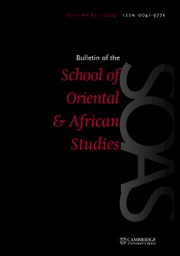In this careful study Letizia Osti takes seriously the praise and criticism that her subject, Abū Bakr al-Ṣūlī (d. 335/947), has received through the ages, and comes down definitively in his defence. She argues convincingly that he was a thoughtful commentator on his life in the caliphal court and his time in history. Osti goes far beyond a “life-and-times” piece, however. She models how to work with the grain of the written material to craft something that is useful for scholars today.
In the first chapter, “Life and afterlife”, Osti closely examines the biographies of al-Ṣūlī that appear in biographical dictionaries. She examines how biographers categorized al-Ṣūlī in their collections. Then, turning to the content of the biographies, Osti shows how two distinct persona of al-Ṣūlī developed and were transmitted over time: that of a court poet and scholar and that of a chess player. Both versions were in circulation yet biographers chose one. Here Osti illustrates the ever-present reality in pre-modern Arabic history of authorial choice masquerading as mere repetition. Osti concludes by noting that while al-Ṣūlī is best remembered as a chess player, al-Ṣūlī himself did not dwell on this aspect of his life and it was clearly not how he wanted to be remembered.
In Chapter 2, “In his own words”, Osti turns to how al-Ṣūlī saw himself, as conveyed in the autobiographical material that peppers his chronicle the Kitāb al-Awrāq. Osti begins by framing her analysis within modern scholarly discussions on what constitutes autobiography. She appropriately warns against universalizing European norms that equate autobiography with individuality and introspection. Building on Hilary Kilpatrick's work on “fragments of autobiography”, Osti analyses the akhbār in al-Ṣūlī's chronicle that include his first-hand observations and assessments. From these she effectively extracts what such accounts reveal about how al-Ṣūlī perceived himself. She concudes: “that the image al-Ṣūlī wants to convey is not that of a great poet; it is, rather, that of a knowledgeable and trusted advisor and instructor who employs various tools to express his guidance” (p. 51). This, she argues, is al-Ṣūlī's explanation for why he included so much of his own poetry in his chronicle. It was not an act of vanity, but of instruction.
The first half of the tenth century has been very well studied by modern scholars and even declared “done” (p. 57). We have a good sense of the scholarly and patronage networks that existed at the time. However, in chapter 3, “In his own time”, Osti pulls from the autobiographical material al-Ṣūlī provides not only his scholarly pedigree, but also a picture of informal gatherings, conversations around the table, and who said what to whom. In so doing she again illustrates the value of al-Ṣūlī's history for what it reveals about physical proximity, relationships as well as networks.
In the chapter “In his own books”, Osti addresses the criticism from Franz Rosenthal that poetry “might as well have been omitted in nearly all instances” (p. 85) from the historical narratives. She shows how in the case of al-Ṣūlī, and therefore probably of others, poetry provides “an essential tool to navigate al-Ṣūlī's scholarship as it is expressed in his written production, its organization and reception” (p. 86). In the Kitāb al-Awraq it would be a mistake to separate the narrative or history from the poetry. Poetry did serve for self-promotion, but it also illustrated for others how to deploy poetry both to instruct and entertain. Furthermore, Osti shows how the poetry “advances the narrative, triggering actions and reactions and framing and highlighting events. In other words, it is one of the tools – arguably one of the most important – that al-Suli uses to organize his text” (p. 94). Indeed, one of the things al-Ṣūlī was praised for was how he organized information. In the diwans that he edited, he organized poems alphabetically, an innovation at the time. In his books he included chapters, section headings, and tables of contents. In this al-Ṣūlī reflects the emerging book culture of the time and the new technologies for classifying and organizing information.
In the chapter “Insight and hindsight”, Osti takes on those who accuse al-Ṣūlī of being too naïve or narrow in his vision to be of much use as an historian. Instead she contends that al-Ṣūlī provides readers with a mature and coherent vision of the past that “conributes to our own historical insight” (p. 99) – Hugh Kennedy was one who praised Miskawayh and dismissed al-Ṣūlī. Osti compares each historian's treatment of a few events and shows that the two authors have different perspectives rather than different skills. Miskawayh was a member of the administration and was concerned with its declining influence. He focused on events outside Baghdad and had the benefit of hindsight, writing at a later date. In contrast, al-Ṣūlī's focus was on events within Baghdad. His first-hand account provides valuable insight into the financial straits and general panic that pervaded the city. Furthermore, al-Ṣūlī, like Miskawayh, had an overarching interpretive framework that guided his editorial decisions, namely the role of the caliph. Accordingly, Osti shows al-Ṣūlī focused on events in which the Caliph Al-Rāḍī took steps to strengthen his position (preaching to the troops) and failed to take such steps – for example when he chose to proceed to Mosul rather than return to Baghdad. Finally, Osti identifies interpretive keys throughout the Awrāq that show al-Ṣūlī to be an insightful observer of and actor in history.
In conclusion, Letizia Osti has written a book that is both useful and a pleasure to read. Senior scholars and graduate students alike will find much here to inform their own research and reflection.



